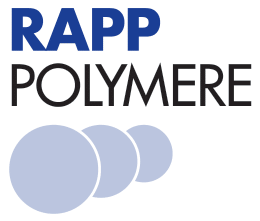Polystyrene Sulfonyl Chloride
€ 75,00*
H1000431.5G
Product information
This chlorosulfonated polystyrene resin is an equivalent to tosyl chloride and can be used in numerous applications. When this resin is treated with nucleophiles, a variety of polymer bound sulfonates can be created ( e.g. sulfonyl azides, sulfonyl hydrazine) and subsequently used as polymeric supports, polymer bound reagents or in catalytic organic synthesis. Application in the "catch and release" strategy, where the resin catches a compound to form a polymer bound tosylate. Purifying the polymer bound tosylate by washing and subsequent treatment by a nucleophile, releases the target product from the resin. A typical application is to form polymer bound tosylates by loading alcohols to the resin. Treatment with nucleophiles like amines, imidazoles or thiols generates the corresponding sec. or tert. amines, alkylimidazoles or thioethers.
This resin can also be used as a scavenger for amine hydrazines and other nucleophiles.
Literature
L 52 Chlorosulfonated Resins
- Rueter, J. K.; Nortey, S. O.; Baxter, E. W.; Leo, G. C.; Reitz, A. B. Arylsulfonate Esters in Solid Phase Organic Synthesis. I. Cleavage with Amines, Thiolate, and Imidazole. Tetrahedron Lett. 1998, 39 (9), 975-978. doi: 10.1016/s0040-4039(97)10719-5.
- Baxter, E. W.; Rueter, J. K.; Nortey, S. O.; Reitz, A. B. Arylsulfonate Esters in Solid Phase Organic Synthesis. II. Compatibility with Commonly-Used Reaction Conditions. Tetrahedron Lett. 1998, 39 (9), 979-982. doi: 10.1016/s0040-4039(97)10718-3.
- Zhong, H. M.; Greco, M. N.; Maryanoff, B. E. Solid-Phase Synthesis of Arginine-Containing Peptides by Guanidine Attachment to a Sulfonyl Linker. J. Org. Chem. 1997, 62 (26), 9326-9330. doi: 10.1021/jo970736n.
- Huang, W.; et al., Polystyrylsulfonyl Chloride: A useful, reactive intermediate for preparation of fuctionalized polymers Chin. J. Reactive Polymers (Engl.), 1992, 1, 61-70.
- Hunt, J. A.; Roush, W. R. Solid-Phase Synthesis of 6-Deoxyoligosaccharides. J. Am. Chem. Soc. 1996, 118 (41), 9998-9999. doi: 10.1021/ja962128f.
- Takahashi, T.; Ebata, S.; Doi, T. Solid Phase Approach to Muscone Synthesis: Rh(I)-Catalyzed Hydroformylation of a 1,1-Disubstituted Alkene on the MultipinTM System. Tetrahedron Lett. 1998, 39 (11), 1369-1372. doi: 10.1016/s0040-4039(97)10847-4.
- Zhang, H. C.; Ye, H.; Moretto, A. F.; Brumfield, K. K.; Maryanoff, B. E. Facile Solid-Phase Construction of Indole Derivatives Based on a Traceless, Activating Sulfonyl Linker. Org. Lett. 2000, 2 (1), 89-92. doi: 10.1021/ol991255o.
- Brummond, K. M.; Gesenberg, K. D. α-Chlorination of Ketones Using p-Toluenesulfonyl Chloride. Tetrahedron Lett. 1999, 40 (12), 2231-2234. doi: 10.1016/s0040-4039(99)00213-0.
- Pirrung, M. C.; Tumey, L. N. Oxazoline Synthesis from Hydroxyamides by Resin Capture and Ring-Forming Release. J. Comb. Chem. 2000, 2 (6), 675-680. doi: 10.1021/cc000047g.
- Hansen, H. C.; Olsson, R.; Croston, G.; Andersson, C. M. Multistep Solution-Phase Parallel Synthesis of Spiperone Analogues. Bioorg. Med. Chem. Lett. 2000, 10 (21), 2435-2439. doi: 10.1016/s0960-894x(00)00483-2.
- Yoshida, Y. Facile and Practical Methods for the Sulfonylation of Alcohols Using Ts(Ms)Cl and Me2N(CH2)NNMe2 as a Key Base. Synthesis (Mass.) 1999, 1999 (09), 1633-1636. doi: 10.1055/s-1999-3561.
- Kamogawa, H.; Kanzawa, A.; Kadoya, M.; Naito, T.; Nanasawa, M. Conversions of Carbonyl CompoundsviaTheir Polymeric Sulfonylhydrazones into Alkenes, Alkanes, and Nitriles. Bull. Chem. Soc. Jpn. 1983, 56 (3), 762-765. doi: 10.1246/bcsj.56.762.
- Hu, Y.; Baudart, S.; Porco, J. A. Parallel Synthesis of 1,2,3-Thiadiazoles Employing a “Catch and Release” Strategy. J. Org. Chem. 1999, 64 (3), 1049-1051. doi: 10.1021/jo981874v.
- Dürr, H.; Hauck, G.; Brück, W.; Kober, H. Polymergebundenes Sulfonylazid Zur Entformylierenden Diazogruppen-Übertragung Und Zur Diazo -Cyclopolyen -Synthese / Polymer Anchored Sulfonylazide for Deformylating Diazo Group Transfer and the Synthesis of Diazo-Cyclopolyenes. Z. Naturforsch. B J. Chem. Sci. 1981, 36 (9), 1149-1152. doi: 10.1515/znb-1981-0918.

